Is it art? ‘Painting’ of beloved house created easily with iPhone app raises question
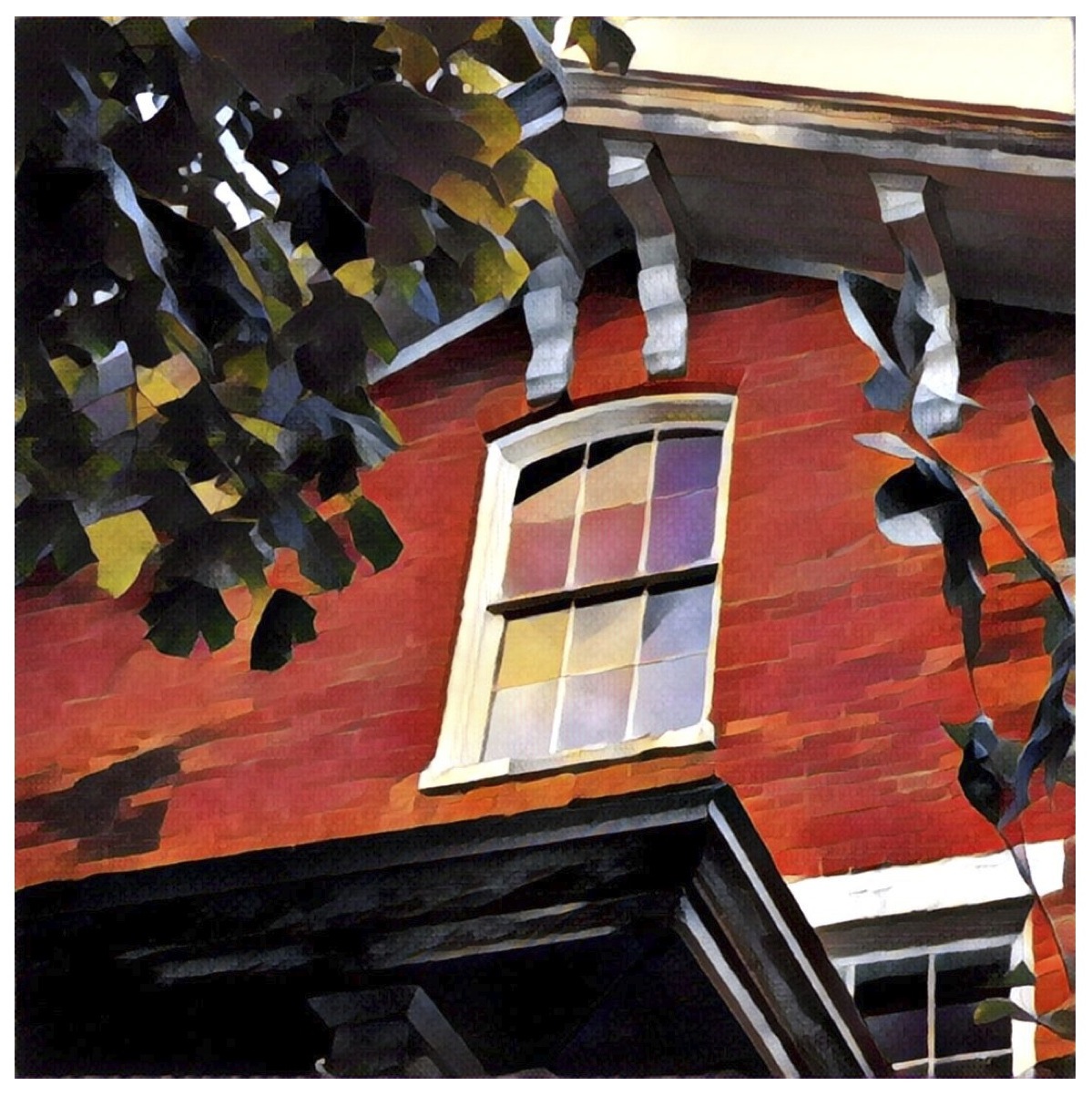 Look at this illustration (the one of the window of a brick house) and tell me: Is it art?
Look at this illustration (the one of the window of a brick house) and tell me: Is it art?
“Well, yes,” you might say. “That’s a nice painting of a lovely old house that has some nice architectural features. Someone obviously took a lot of time to use their talent and training to create this.”
But what if I told you this was created not with brushes and paint, not with training in technique nor hours of practice and skill, but with two simple taps on an iPhone? Would it still be art?
It’s a question I’ve been asking myself since I very easily produced it with a new iPhone app called Prisma. This app allows you to take a photo and apply one of 36 filters that make the photo look like a stylized work of art. You can make photos look like works by Vincent Van Gogh or Edvard Munch’s “The Scream.” Other filters turn your photo into a watercolor painting, a comic book image, a pencil drawing or a mosaic that looks like hundreds of tiny tiles or pieces of stained glass. And, as the TV ads say, many more.
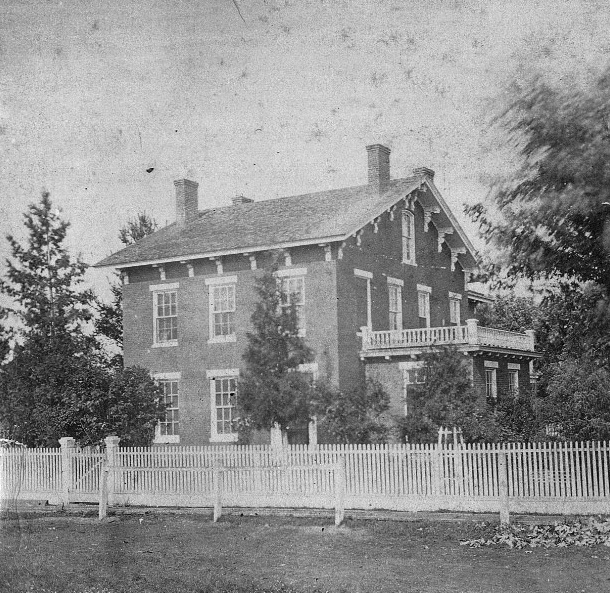 Here is how the Garner House looked from a photo taken apparently sometime before 1900.The photo I used is not just a photo of some random house, but a photo of the house where I grew up, which is also a historic house, built by one of the early settlers of my hometown. The Garner House in Columbus City, Iowa, was built in about 1850 by Col. Wesley W. Garner, a farmer, surveyor, civil engineer, merchant and mover-and-shaker in southeast Iowa in the mid-19th century.
Here is how the Garner House looked from a photo taken apparently sometime before 1900.The photo I used is not just a photo of some random house, but a photo of the house where I grew up, which is also a historic house, built by one of the early settlers of my hometown. The Garner House in Columbus City, Iowa, was built in about 1850 by Col. Wesley W. Garner, a farmer, surveyor, civil engineer, merchant and mover-and-shaker in southeast Iowa in the mid-19th century.
I took the photo in the fall of 2015, the first time I had been back on the property since my Mom and Dad moved out of the house in 1992. Our family had lived in the house since about 1966 and since I was born in 1964, it is where my earliest memories are.
I took the photo with a simple tap on my iPhone screen that early evening back in September 2015. And in July 2016, I tapped my iPhone again to apply the Prisma filter to the photo to make it look like this painting.
Two taps.
Art.
Or, again, is it art?
When I posted this image to Facebook, my high school art teacher saw it, contacted me and said I should see what the image looked like printed on paper. My sister, Jodie, said if I printed it, she would like a framed copy. Mom said she wanted one, too.
At this point, I shook my head and said, “Wait a second: Prisma, this app, is a cool toy that makes interesting-looking images. But if we get to the point of actually printing and framing them and hanging them alongside actual works of art that real artists spent real time and real talent creating, then it’s like some sort of fraud, some fakery, some counterfeiting. It’s not real art.”
But on the other hand, I was curious, too. So I printed them. And I didn’t just print them on an inkjet printer. I used a photo service that printed the image onto canvas and framed it. If I was going to fake it and make it look like art, I was going to go all in.
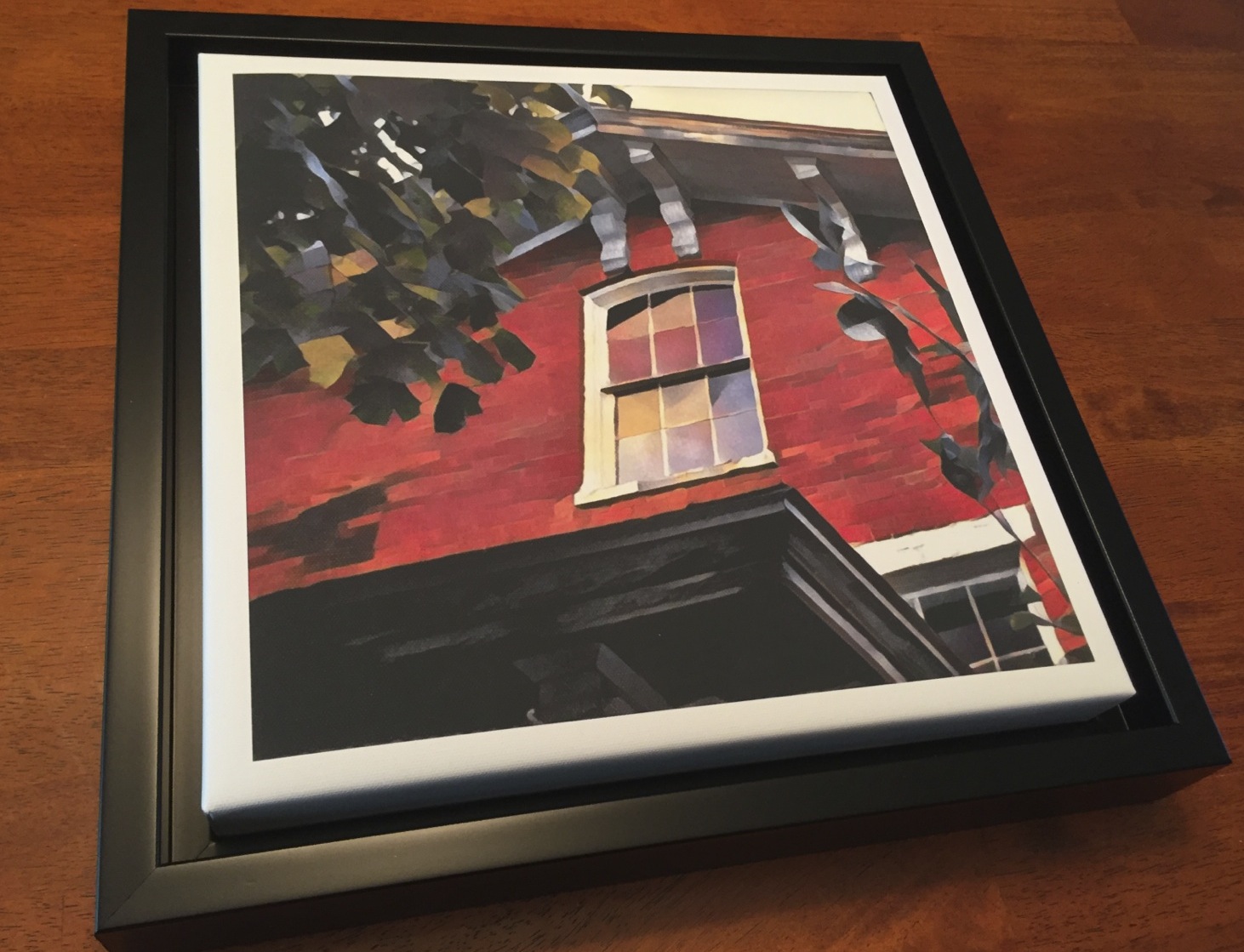
I was extremely pleased with the result. I took a photo of the framed work of “art” I had produced and posted that to Facebook. My art teacher from high school, Kathleen Almelien, was the first to respond, saying how much she liked it.
“Maybe we can arrange an art swap,” she messaged me.
This floored me even more. Here is my art teacher, an actual artist with actual gallery shows, who produces actual lovely and award-winning original works of art via her talent, training and hard work, who wants to exchange one of those works of hers for the thing I made with two taps on my iPhone (three taps if you count ordering the framed canvas print).
Of course, I said, “Yes,” but did express my misgivings: “I just feel like that if you do display it, you'll need a disclaimer explaining how very little effort went into this—it is all sort of a magic trick.”
Her reply to me: “You took the photo, and you thought of using the button. That is experimental art.”
Part of my misgivings on the lack of effort it took to make this “work of art” is that I struggled with actual, technical skills to create art. In Mrs. Almelien’s class back in the day, I had way more creativity than ability to successfully learn technique. I made muddy watercolors, lumpy clay pots and my pencil drawings were mostly erasures. I often pressed ahead, ignoring technique and flailing away at whatever project I was doing—I usually had a certain vision for how I wanted it to turn out, but mostly due to my impatience to properly learn correct technique, I didn’t always get the desired result.
And now, with just a few taps on my iPhone, I turn out a work I’m not only pleased with, but I now realize the work is something I had long sought. Because I was born there, because I spent my childhood there with my family and because the house has such historical importance and has such grand architecture, the place is imprinted deeply within me. And though I knew the house was old and hard to maintain and that my parents deserved better, it was an emotional time for me when they moved to a nicer, newer house in 1992.
And so, beginning in 1992, I sought to capture the essence of the house in some meaningful way. I took some photos of the house before they moved. But that wasn’t really satisfying. Mostly, I have dreamed about the house—it is the setting for most of my unconscious nocturnal scenes.
As a Christmas gift to Mom and Dad the year they moved to the new house, we three kids had the idea to get them an artist’s pen-and-ink drawing of the house. While the gift was a big hit and we all weeped when Mom and Dad opened it at Christmas, I was never completely pleased with it.
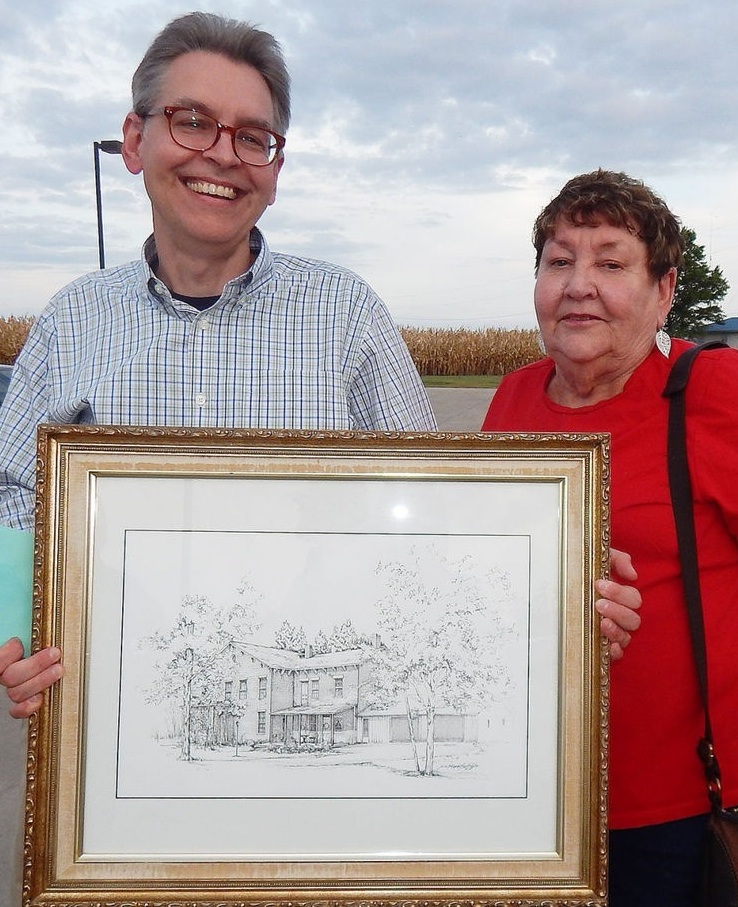 Me and Mom with the pen-and-ink drawing of the Garner House we kids had commissioned for Mom and Dad when they moved from the house in 1992.It was impractical for the artist I commissioned to actually visit the house—she drew it based on a small photo I gave her, taken in less-than-ideal light. It was back in the days of film cameras and before the internet. Today, we’d be able to give her much better source material—hundreds of high-resolution digital photos and online access to historical records. So, given the limitations of the day, our artist really did a fantastic job.
Me and Mom with the pen-and-ink drawing of the Garner House we kids had commissioned for Mom and Dad when they moved from the house in 1992.It was impractical for the artist I commissioned to actually visit the house—she drew it based on a small photo I gave her, taken in less-than-ideal light. It was back in the days of film cameras and before the internet. Today, we’d be able to give her much better source material—hundreds of high-resolution digital photos and online access to historical records. So, given the limitations of the day, our artist really did a fantastic job.
Still, I realized that to capture the house the way I saw it, I would need to do the work myself. And I considered this seriously for a time. Watercolors? Oils? The problem was my art skills and technique were lacking. I may have had the vision but to make the vision reality, I would need to train to attain the skill level this project deserved before even attempting it.
I never did it. I forgot about it.
As the years passed, the old house became further and further removed from me. When my brother, Andy, died in 2010, one of the people with whom I could share stories and memories about the house was gone. Three years later, Dad died. And not only have people with whom I shared memories of the house departed, but the house itself could be seeing its last days. In recent years, the house has deteriorated in serious ways—the current owner is absentee and very little is done to maintain a property that, during our family’s time there long ago, required a great deal of maintenance. The prospect of losing the Garner House—one of the last homes remaining of the area’s mid-19th century settlers—is very real.
Last fall, a local group was formed that looked into saving and possibly restoring the Garner House, hoping to find new 21st-century life for this old monument of the mid-19th century. I heard about the group and went back to my hometown to attend some of the meetings.
And it was at one of these first meetings that we toured the exterior of the house. The doors were locked so we couldn’t get inside, which was OK because those who had been inside described heartbreaking scenes of neglect, complete with animals who had crawled inside and died.
But outside, I saw the house I remembered, though much, much rougher for wear. Bricks were coming loose or had fallen out entirely. Windows were broken. Weeds and brush grew so thickly around the outside that it was even difficult to get a good view of the exterior.
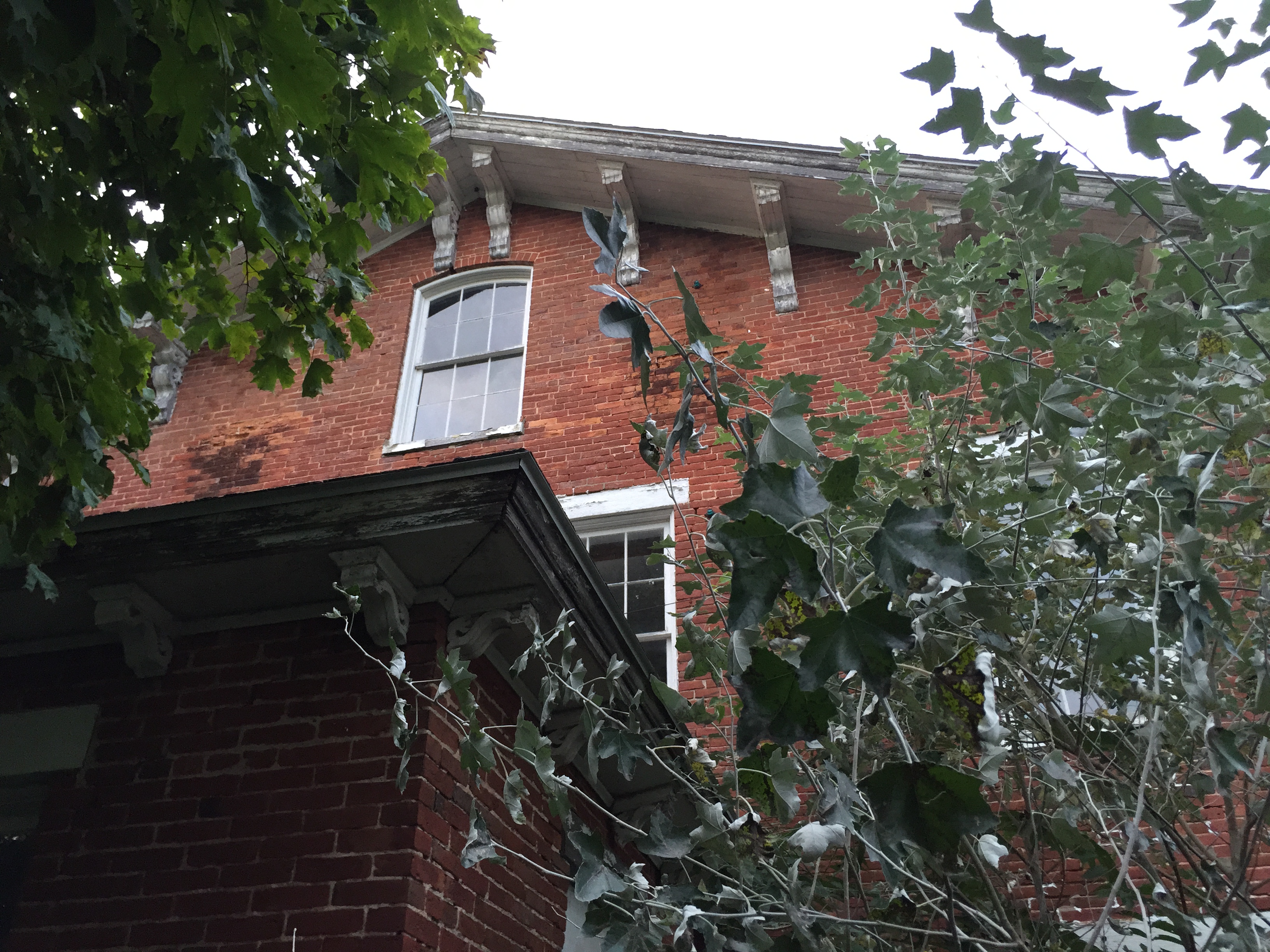 Here is the original, unedited source photo used to create the artwork in the Prisma iPhone app. The "painting" takes away a lot of the rougher edges of the house's deterioration, making it look a little more like it did when I lived there as a kid—or maybe as I imagined how it looked.But I took some photos and one of those photos I turned into a painting using the magic iPhone app, Prisma. The whole process to convert it to a painting took less than 30 seconds. And yet, that little bit of technological trickery did something I did not expect. It reminded me how I once sought to somehow artistically capture the essence of the house. Here, without really trying, I had done it.
Here is the original, unedited source photo used to create the artwork in the Prisma iPhone app. The "painting" takes away a lot of the rougher edges of the house's deterioration, making it look a little more like it did when I lived there as a kid—or maybe as I imagined how it looked.But I took some photos and one of those photos I turned into a painting using the magic iPhone app, Prisma. The whole process to convert it to a painting took less than 30 seconds. And yet, that little bit of technological trickery did something I did not expect. It reminded me how I once sought to somehow artistically capture the essence of the house. Here, without really trying, I had done it.
Looking closely at the “painting,” I gush about how good it looks and know I’m not bragging because I had nothing at all to do with how it appears. I mean, look at the way the bricks’ colors are captured—blending the various shades of red and brown. Look at the “brushstrokes” on the decorative eave brackets—the two just above the curved top window at the peak of the roof and the one just to the right.
And look at that top window. Like all the windows in the house’s original construction—and like many houses built in the mid-19th century—it has 12 separate portrait-shaped panes of glass. Looking at the original photo, those 12 panes all seem to be a uniform color, but whatever algorithm “painted” this, took some artistic license and made the panes reflect slightly different colors of light—from yellow, to white, to reddish, to dark purple.
Of course, huge credit for the artistry has to go to the original architects, who designed the house in the early 19th century, doing it all without the aid of computers or the idea that someday someone would come along and turn the house into a painting with their telephone—at a time when the original telephone’s inventor Alexander Graham Bell was, at best, a toddler (born in 1847).
Of course, part of the reason I like this “art” is because the subject matter is close to my heart. Walking around the house that night I thought of my family as we lived there and thought of my brother and father, now gone. I also thought of the prospect that this old historic house, which stood for 165 years, could be gone soon, too. If I can take credit for anything, it’s that I was lucky to capture any images of the house at all as I struggled to hold it together emotionally in those moments. If part of art is not just simple technical skill, but also feeling and emotion, then maybe these photos I took, did, unwittingly, contribute to the spirit of the final product.
But really, the photo is nothing remarkable—a snapshot and nothing more. It was the Prisma app that turned it into a painting that not only made it shine, but that finally presented the essence of the old house in a way deeply satisfying to me. Who could have thought Prisma—and not hours learning to oil paint—was the answer I was looking for all along.
And so to answer my original question: Is it art?
Maybe it is, yes.
 Art,
Art,  Columbus City,
Columbus City,  Garner House,
Garner House,  Painting,
Painting,  Prisma,
Prisma,  iPhone
iPhone 



Reader Comments